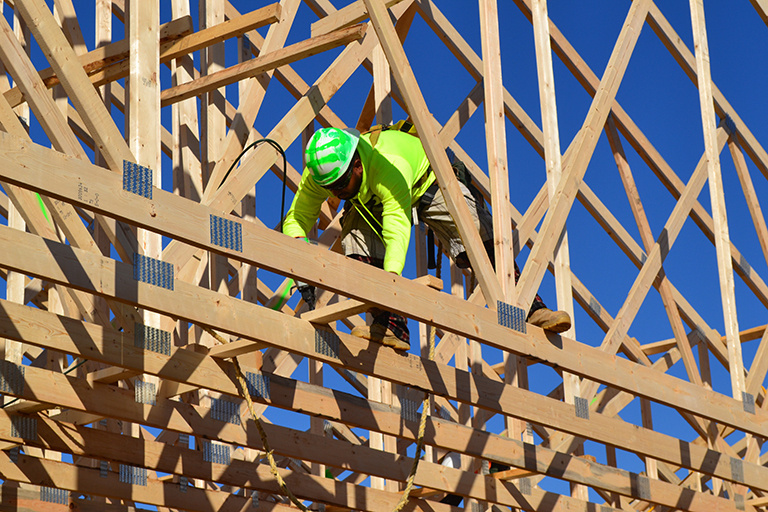Fall Protection

The Occupational Safety and Health Administration (OSHA) regulates fall protection procedures for residential construction jobsites under 29 CFR 1926 Subpart M. These statutes provide minimum requirements for the mitigation of fall risks during erection. To acknowledge that complying with the conventional fall protection standard 29 CFR Part 1926 Subpart M can be difficult in certain circumstances, OSHA added Appendix E to the standard, which allows framers to create a fall protection safety plan specific to a jobsite (a “site-specific” plan) that deviates from conventional approaches to fall protection. SBCA and the National Framers Council (NFC) are working together to develop best practices to make OSHA-compliance easier during the installation of structural building components. Two documents being used as the foundation of that collaboration are NFC's FrameSAFE program and SBCA's Building Component Safety Information (BCSI) booklet.
Top Resources
The goal of a site-specific plan is to get framers to think in detail about how they will mitigate fall risks on each jobsite. This article outlines the evolution of the tools SBCA and NFC have developed to make this process easier, while meeting the framer’s responsibility to actively assess each jobsite.
One of the confounding issues for framers when developing a site-specific safety plan is to find fall protection tie-off points that meet OSHA 10’s 5,000-pound capacity requirement. This article explains how attaching fall protection to roof trusses themselves is permitted for site-specific plans where BCSI bracing is used.
29 CFR 1926 Subpart M provides a template approach for developing alternate, site-specific fall protection plans and illustrates the various site conditions that must be analyzed and addressed.
Best Practices
NFC developed a site-specific plan template as part of its FrameSAFE program. The template provides a standardized approach and language for addressing a broad range of compliance difficulties, such as requirements surrounding tie-off points, safety nets, ladder use, and exterior scaffolds. It also offers multiple options for creating a site-specific plan that reflects regional best practices.
The BCSI-B11 Summary Sheet provides guidance to framing crews on how to assess fall hazards while installing trusses on residential construction jobsites.
NFC's FrameSAFE includes 15 Toolbox Talks focused on implementing an OSHA-compliant approach to fall protection on a jobsite. These Toolbox Talks are intended to make training on the jobsite easier by breaking the information down into individual concepts.
In 2011, SBCA worked with OSHA to develop a step-by-step guide to help component manufacturers educate their customers on how to create a site-specific plan while standardizing as much of the language as possible. This guide gives framers a systematic approach and language they can use in addressing the common obstacle of finding an adequate fall protection tie-off point.




